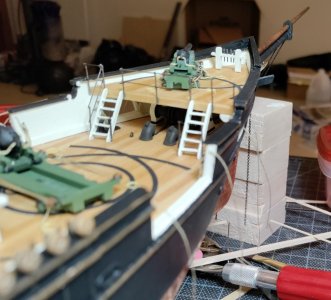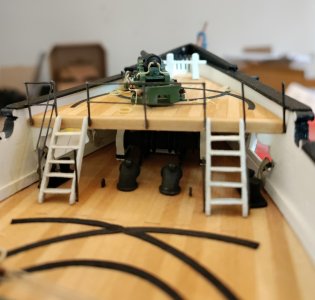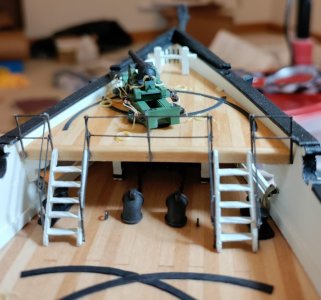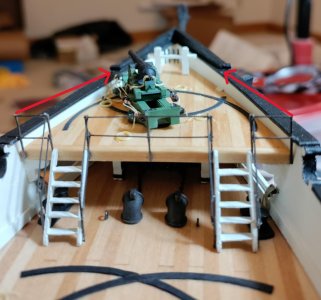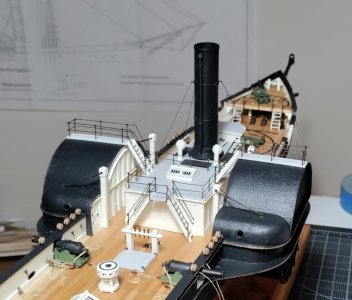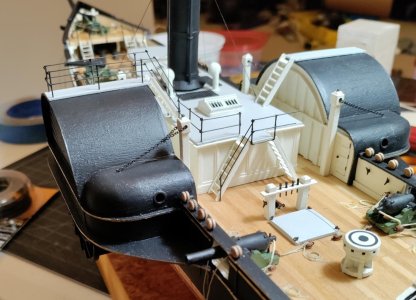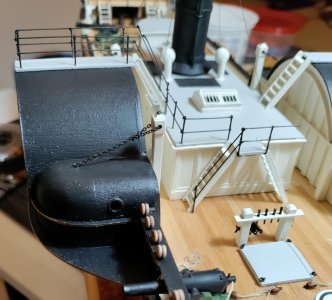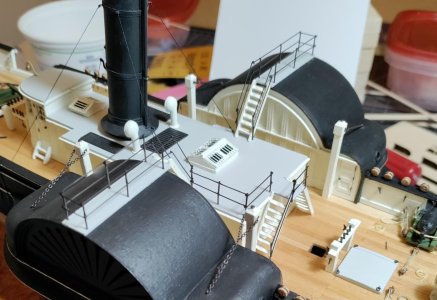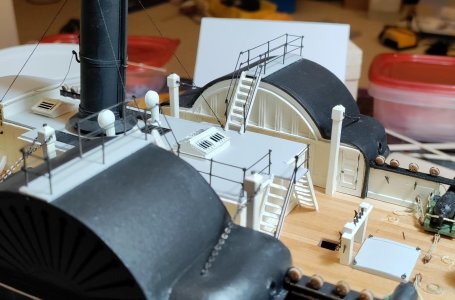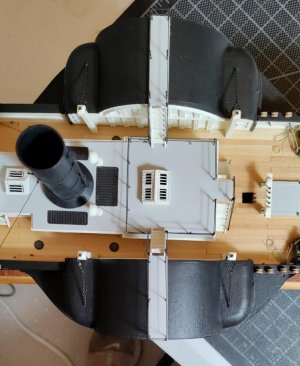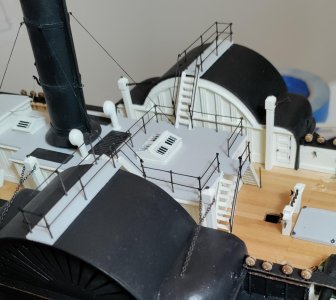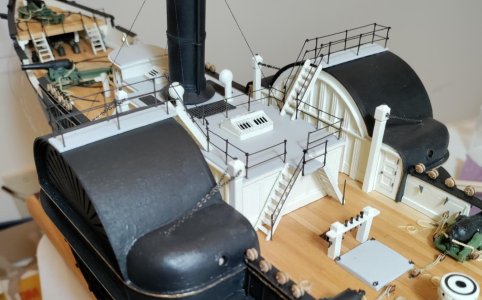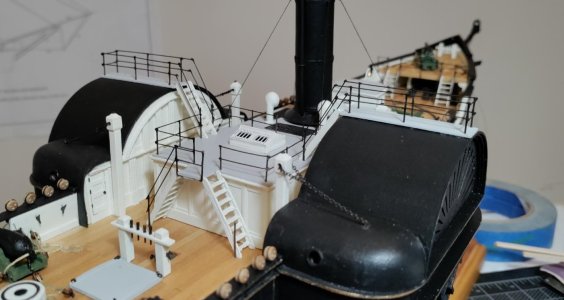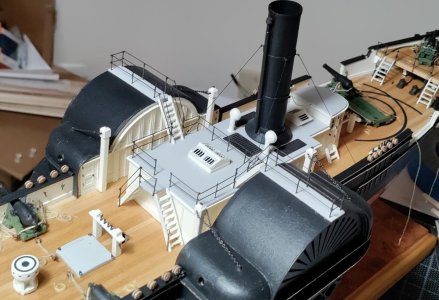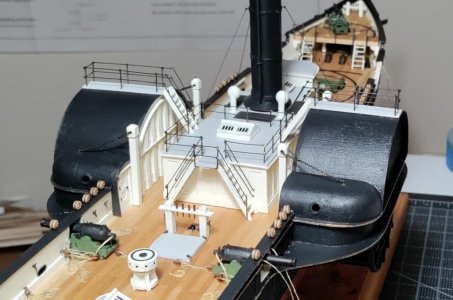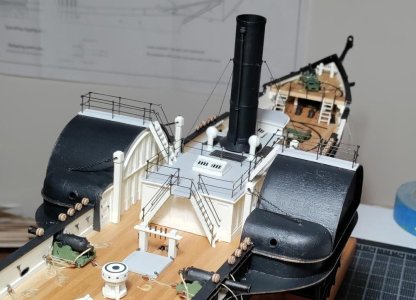What ho, shipmates!
Now that I got the ladders built and installed, it was time to move to the next daunting project - railings. The kit comes with brass PE that probably looks great in the hands of a skilled modeler, who knows how to work with delicate large pieces of PE and who has all of their fingers. I don't have any of those qualifications. Moreover, I needed railings for the raised foredeck which don't come with the kit. Double moreover, I changed the heights of objects such that the kit supplied railings no longer fit at all.

Also - the instructions explicitly direct the builder to leave the railings until you've rigged the ship. Because my rigging plans are meant to show significantly more detail than the kit calls for, I decided to do it now. Also - there would be no way for me to install the railings once the ship has her masts and rigging complete. When I post about the aft railing project you'll see what I mean.
Background - I knew I would have to make railings when I decided to emulate Pete Gutterman's
Harriet Lane build. I even sourced a soldering set, rosin and flux. The closest experience I have to soldering is sweating copper plumbing. I thought the experience would transfer. It didn't. The missing fingers turn out to be a bit of a problem when I'm working very small. Moreover, based on my attempts, I concluded that annealed steel wire cannot be soldered. At least I couldn't do it. Any experts out there - please school me.
As we all know, there's always another way! Enter Gorilla Gel super glue. This man's best friend.
Here are some shots of the fore deck railings. I used 24 gauge annealed steel wire for the posts and 28 gauge for the rails. The scale height of the railing is 3.5 feet. I think I measured the kit supplied railing for that dimension. You may notice this, but just in case you don't I'll make it clear. I worked from left to right with the bow pointed away from me. The work on the left is less proficient than the work on the right - I was literally learning as I went along.
In this pic, I had most of the railing done and I discovered that I needed to do the ladder railing from left to right as I was doing the upper railing - the space was too small for me to treat the ladder railing as a separate process. What you don't see is how many times I knocked the center railings off the posts and ad to reglue them.
View attachment 483030
Better shot. I thought of putting the posts into the deck, but I was to worried about messing up the deck to drill holes in it. I couldn't imagine having to redo the whole foredeck. So, I CAd the posts to the aft end of the deck. In person the glue looks more like a bracket that holds the posts.
View attachment 483033
Finished. It is a bit fragile held together with only super glue. I thought about this for a day or so and decided to use some Titebond 2 to make it look like the parts are welded together with the added benefit of stiffening the structure. It worked. Hopefully, I'll be able to post about the more complicated project of the aft railings this weekend and you'll be able to see what I did.
View attachment 483036
I was left with a question in my mind. Did I need to extend the railing's forward at the bulwarks for the safety of the gun crew and hands working on that deck?
I'm sure that I will, but I'd appreciate your thoughts. Here's a pic to help you help me. Also, if you really want to help me send me a pic of a Civil War era ship with this kind of railing. I'll be doing research too
 View attachment 483037
View attachment 483037
Blessings.
Chuck





